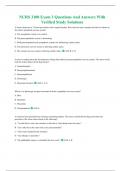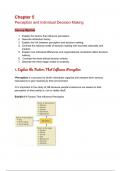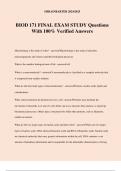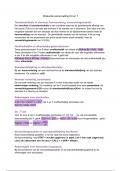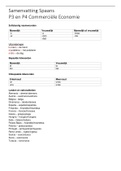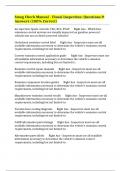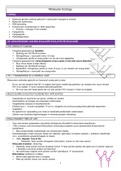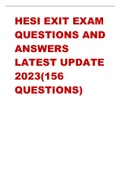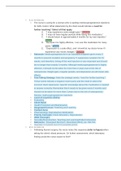Tentamen (uitwerkingen)
NURS 3100 Exam 3 Questions And Answers With Verified Study Solutions
- Vak
- Instelling
NURS 3100 Exam 3 Questions And Answers With Verified Study Solutions A client's heart rate is 72 beats per minute with a regular rhythm. How does the nurse interpret this data in relation to the client's peripheral nervous system? A. The sympathetic system is in control. B. The parasympathetic s...
[Meer zien]
